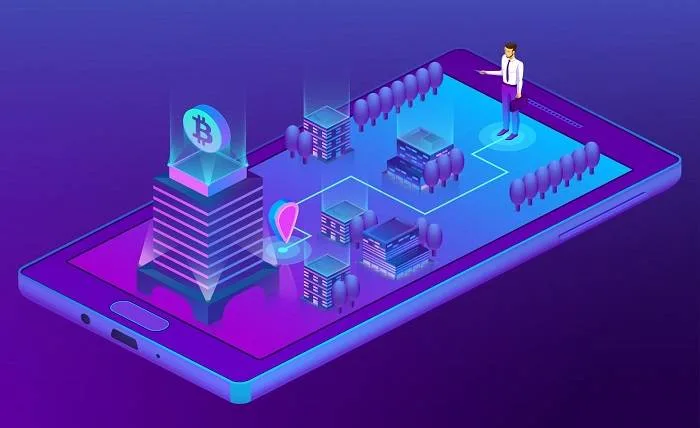Critical infrastructures like power grids, telecom networks, transportation systems, etc. are crucial for running economies as well as societies. Securing such critical infrastructure against cyber threats is vital today. However, existing wireless technologies used for communication networks in critical infrastructure have some key limitations in transmission speeds, security, interference management, etc. Li-Fi, which uses visible light for high-speed as well as secure wireless communication, provides a compelling alternative that can overcome many of these challenges. This article explores how the rise of Li-Fi technology can play a major role in transforming Internet Security Companies critical communication networks.
Understanding Li-Fi and How it Works
Li-Fi, or Light Fidelity, refers to wireless communication technology that uses light waves from LED bulbs to transmit information, instead of radio frequencies used by Wi-Fi routers. Li-Fi works by switching LED bulbs on and off at very high speeds that are imperceptible to human eyes. This generates a binary code of 1s as well as 0s that enables data transmission through variations in light intensity.
Li-Fi technology was invented by Professor Harald Haas from the University of Edinburgh in 2011. In lab tests, he demonstrated transmission speeds up to 224 Gbps by using an LED lighting array. While real-world implementations achieve far lower speeds, Li-Fi can still deliver speeds well above 10 Gbps which is much faster than even 5G networks.
Li-Fi offers very high frequency bands in the THz range for communication, enabling massive amounts of spectrum availability. As wireless channels get increasingly congested, Li-Fi provides close to unlimited bandwidth for communication.
Key Benefits of Li-Fi Over Existing Wireless Technologies
Li-Fi provides several innate advantages stemming from its use of visible light for data transmission:
- More secure: Since light cannot penetrate through opaque structures like walls, Li-Fi signals are confined within rooms they are transmitted in. This prevents unauthorized interception of data making it much more secure than Wi-Fi.
- No interference: Li-Fi does not create or face any electromagnetic interference with other wireless technologies like Wi-Fi, 4G/5G cellular networks, or Bluetooth. This allows reliable coexistence.
- Localized transmissions: Li-Fi signals transmit in very narrow beams as well as do not spread out like radio waves. This makes interception harder and enhances location-specific privacy as well as security.
- Extremely high speeds: Li-Fi offers multi-gigabit data rates that can easily outperform even 5G or Wi-Fi 6 networks. This enables real-time control as well as operation of infrastructure.
- Easily deployable: Li-Fi can simply leverage existing LED lighting fixtures for data transmission. No major additional infrastructure needs to be deployed specifically for communication purposes.
- Zero EMI: Unlike radio waves, Li-Fi does not generate any harmful electromagnetic interference. This makes Li-Fi ideal for use in sensitive environments alongside critical electrical/electronic equipment.
- Difficult to jam: Due to its visible light properties, it is nearly impossible to jam, spoof or intercept Li-Fi signals unlike radio frequencies.
- Enhanced capacity: Multiple Li-Fi access points can reliably provide coverage to the same areas without any interference or performance hits.
- Operates in radio-sparse environments: Li-Fi provides wireless connectivity in areas where too many radio signals make RF communication unreliable.
How Li-Fi Can Transform and Secure Critical Infrastructure
The multitude of benefits offered by Li-Fi make it immensely useful for securing the following critical infrastructure sectors:
- Aviation: Li-Fi can enable secure in-flight connectivity and support aircraft navigation/location systems.
- Railways: Li-Fi can integrate with rail signalling systems and provide interference-free connectivity for control/communication networks.
- Power grids: Li-Fi can provide reliable communication links between generators, grid stations, transformers and control centres.
- Telecom: Li-Fi is ideal for 5G small cell backhaul, data centres, and shearless integration with legacy networks.
- Banking: Li-Fi networks can enable resilient high-speed trading and secure customer transactions.
- Hospitals: Li-Fi allows wireless connectivity for medical devices, patient health monitoring, and asset tracking without causing EMI issues.
- Transportation: Li-Fi enables secure vehicle-to-infrastructure communication for intelligent traffic control.
- Utilities: Smart metering, grid automation, demand response all benefit from Li-Fi connectivity in electric, water and gas utilities.
- Government: Li-Fi networks can support e-governance, emergency/disaster response, defence, and other public agency communications.
- Oil and Gas: Li-Fi can provide connectivity for offshore platforms, refineries, pipelines with precision and security.
Overcoming Adoption Challenges for Li-Fi
However, there are some challenges too in widely adopting Li-Fi:
- Limited mobility due to line-of-sight requirements. Using mirrors and reflective surfaces can help overcome this.
- Current lack of Li-Fi capability in end-user devices. Integration into chipsets will drive economies of scale.
- Diffused ambient light can deteriorate performance. Directional Li-Fi arrays minimize such issues.
- Access point density needs to be high for campus-wide coverage. Intelligent network planning and deployment optimization is key.
- Power consumption from always-on lighting. Smart illumination controls and balancing loads across APs can help minimize this concern.
- Defining exposure limits and eye safety standards as high intensity visible light at close proximity can be hazardous. Techniques like beam steering provide directionality while meeting safety norms.
- Operability in direct sunlight: Needs tuning of wavelengths and filtering of noise. Integration of solar cells into Li-Fi systems can provide renewable power.
- Lack of two-way transmission capability currently. Ongoing innovations on transmit/receive coordination will enable bidirectional Li-Fi.
With thoughtful solutions, these limitations can be addressed for successfully deploying Li-Fi across vital industries.
The Road Ahead for Li-Fi in Critical Infrastructure
Li-Fi is still evolving technology yet to see mass adoption. But given its merits, Li-Fi promises to become the default wireless connectivity choice for vital infrastructure sectors in the future. With 5G radio networks also beginning to roll out globally, we are likely to see a converged deployment of 5G and Li-Fi – with 5G providing general wide-area mobile access and Li-Fi providing secure, mission-critical communication for core infrastructure functioning.
As technology enhances further with mobility, bidirectional transmission, solar integration etc., Li-Fi is poised to bring about a paradigm shift in securing and modernizing critical infrastructure communication over the next decade. With its unique security and performance benefits, Li-Fi will become indispensable for mission-critical networks across aviation, rail, power, telecom and other vital industries in the years ahead.
Conclusion
Wireless connectivity forms the nervous system empowering critical infrastructure like power grids, industrial plants and transportation networks today. Legacy radio frequency communication faces challenges around security, interference, noise and congestion. Li-Fi provides a compelling alternative offering high speed, localization, reliability and security. As Li-Fi adoption accelerates, it will transform the communication networks vital for functioning of economies by providing fast and secure wireless connectivity across critical infrastructure sectors. With its multitude of merits, lifi technology will become integral to mission-critical systems across power, rail, aviation, telecom and other key industries in the future.



